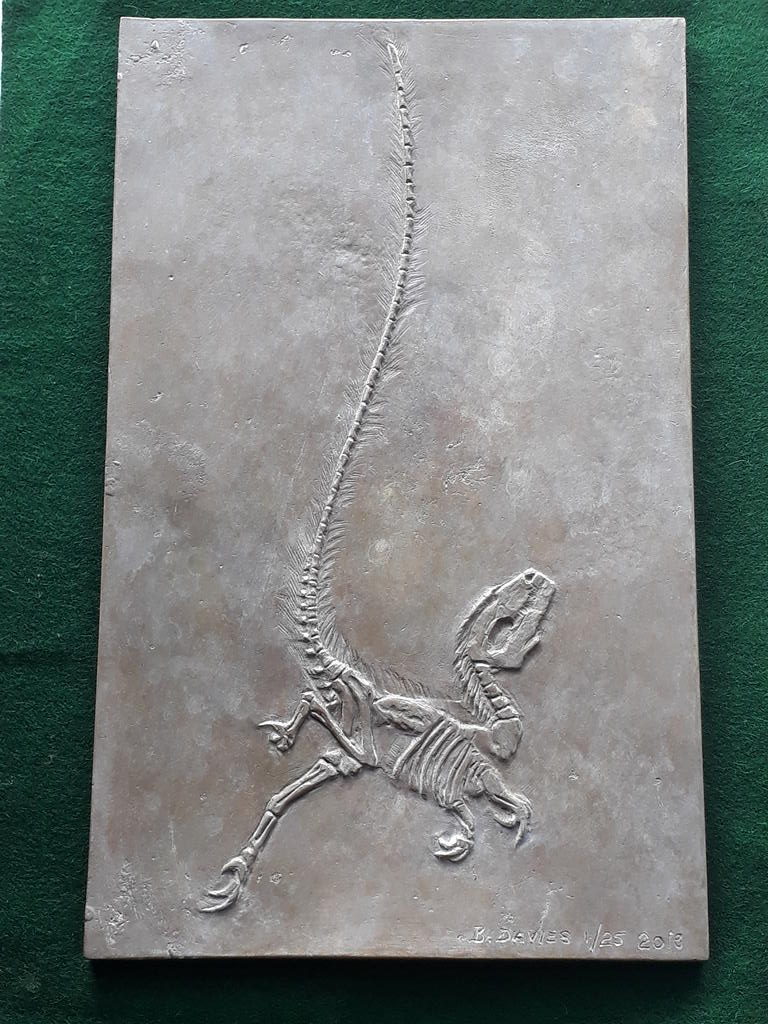

Palaeontology Sculpture
Sinosaurusopteryx Prima is a 130 to 122 million year old fossil from the Cretaceous period and the first dinosaur ever found that showed evidence of having feathers.
It was discovered in the Liaoning Province of China.
Sinosaurusopteryx represents an important stage in Theropod evolution that is currently poorly understood. It has the longest tail of any known bipedal Theropod and has three fingered hands dominated by the first finger which is longer and thicker than any of the bones of the forearm. Sinosaurusopteryx has a thick coat of filament feather like structures just visible in the fossil and is a critical piece of evidence in supporting the theory that birds descended from dinosaurs. It is a close relative of the older genus Compsognathus, both genera belonging to the family Compsognathidae.
This humble creature represents such an important stage of bird evolution and its fossil form, which I have replicated as a palaeontology sculpture in herculite and to be cast in bronze, resides in a museum in Inner Mongolia.

